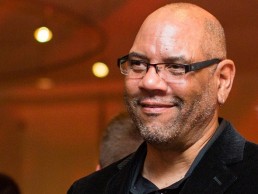
Edward Bartholomew
As part of an ongoing mission to examine how lighting can address societal inequities, Edward Bartholomew has, alongside friend Mark Loeffler, formed online platform Light Justice. Bartholomew sits down with arc to tell us more about Light Justice and its goals.
What is Light Justice?
Light Justice is the practice of planning, designing, implementing, and investing in lighting for historically neglected communities through a process of stakeholder respect and engagement; it is a movement, a forum, a resource, and a platform to change the practice of lighting design to address lighting inequity.
How and why was it formed?
During the social justice uprising that occurred after the brutal murder of George Floyd by the police, I started to look again at the practice of lighting, and how it tends to only serve the wealthy and well-funded, but neglects poor, under-resourced communities, especially in the Black and Brown communities that I grew up in. During walks with my wife during the pandemic, we discussed how lighting could address social justice issues. At this time, my good friend Mark Loeffler began to mentor me as I was restarting my firm. Our conversations evolved into a common interest to look at lighting through the lens of environmental justice, especially in outdoor lighting. This developed into a well-researched talk called Light + Justice that explored the historical use of light as a weapon of oppression, including current policies deployed in New York City called “Omnipresence”, which places temporary diesel-powered floodlights in public housing developments to deter crime but end up making the spaces feel like crime scenes. Omnipresence is an egregious example of the “weaponisation of light” on poor, mostly Black and Brown communities that is happening today. We presented Light + Justice locally and at LightFair in the Fall of 2021. In addition, we have authored articles, and I have partnered with my friend Glenn Shrum to present an expanded version of the talk to the lighting community throughout the country. But this is not just an American issue; it shows up in Britain and throughout the world where poor and marginalised people are subjugated to substandard lighting due to negligent and unjust design.
What are your core goals?
Our core goals are to show light’s social and environmental justice impact. And how lighting has been weaponised in poor, under-resourced communities. Also, to show that engaging these communities in the design process as “citizen designers” can enable good lighting design and beneficial darkness that lifts up communities.
What are you doing to reach these goals?
I am sharing the principles of Light Justice at conferences and with design professionals, and I practice these principles in the projects I pursue and by using the ideals of “design justice” as I work with marginal, under-resourced communities. I am incredibly excited about projects where I get to collaborate with these communities and learn about the impact of lighting on their neighbourhood.
Light Justice talks about the “increasing imbalance” in public realm lighting. How and why do you think it exists?
In my research, I have found several factors that drive this imbalance, but most of them are based on systemic racism. This impacts why these communities are located near unhealthy industrial zones, and why they are deprived of the resources to improve their environment. Finally, the use of over lighting to reduce crime based on erroneous studies has only exacerbated these conditions.
How do you hope to redress this imbalance?
First, identify vulnerable communities where lighting has been poorly planned and has caused environmental injustice. Second, engage these communities to acquire the resources and educate them regarding lighting quality to support the lighting redesign of their communities. Lastly, to be a resource for these communities to navigate the city and utilities to remedy the lighting in these neighbourhoods. Light Justice is a resource for all designers to have an impact on neglected communities, to enable us to use our talents and gifts to have a positive impact on neglected communities with light.
What sort of response have you had so far?
So far, it has been positive. We are gaining supporters through LightJustice.org and developing tool kits and best practices so that designers working can use lighting to transform their communities. Currently, my firm is working with a local community to create a neighbourhood lighting design plan that we hope will be an example of what cooperative lighting design can achieve.
Where do you hope to take it going forward?
We want to extend the frame of environmental justice to interior spaces and even address the discrepancy in access to daylight and views for marginal under-resourced communities. We all know that light has power, but we should share this power equally, to help everyone experience the benefits of good lighting and beneficial darkness.



